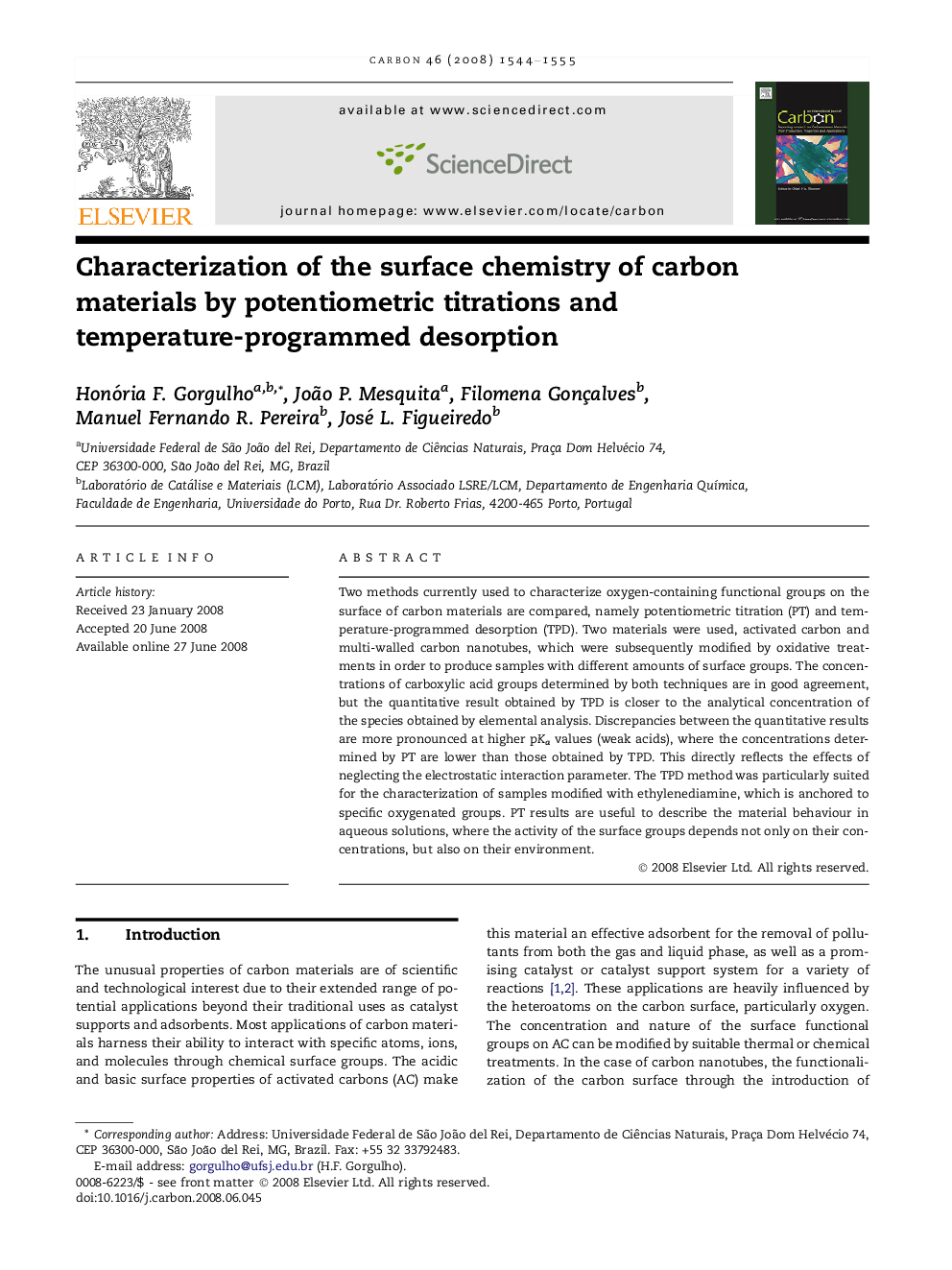| Article ID | Journal | Published Year | Pages | File Type |
|---|---|---|---|---|
| 1417874 | Carbon | 2008 | 12 Pages |
Two methods currently used to characterize oxygen-containing functional groups on the surface of carbon materials are compared, namely potentiometric titration (PT) and temperature-programmed desorption (TPD). Two materials were used, activated carbon and multi-walled carbon nanotubes, which were subsequently modified by oxidative treatments in order to produce samples with different amounts of surface groups. The concentrations of carboxylic acid groups determined by both techniques are in good agreement, but the quantitative result obtained by TPD is closer to the analytical concentration of the species obtained by elemental analysis. Discrepancies between the quantitative results are more pronounced at higher pKa values (weak acids), where the concentrations determined by PT are lower than those obtained by TPD. This directly reflects the effects of neglecting the electrostatic interaction parameter. The TPD method was particularly suited for the characterization of samples modified with ethylenediamine, which is anchored to specific oxygenated groups. PT results are useful to describe the material behaviour in aqueous solutions, where the activity of the surface groups depends not only on their concentrations, but also on their environment.
